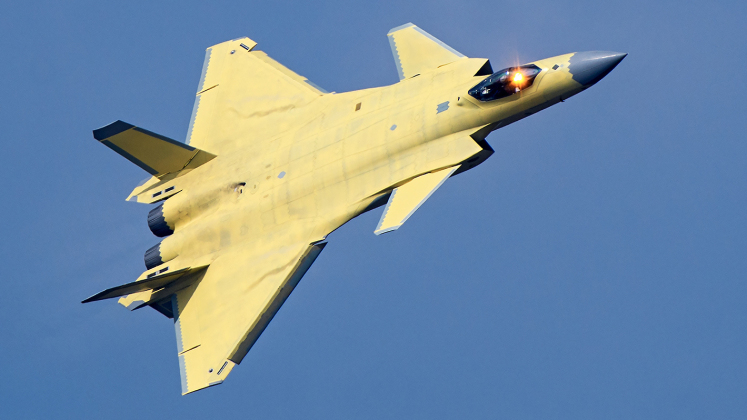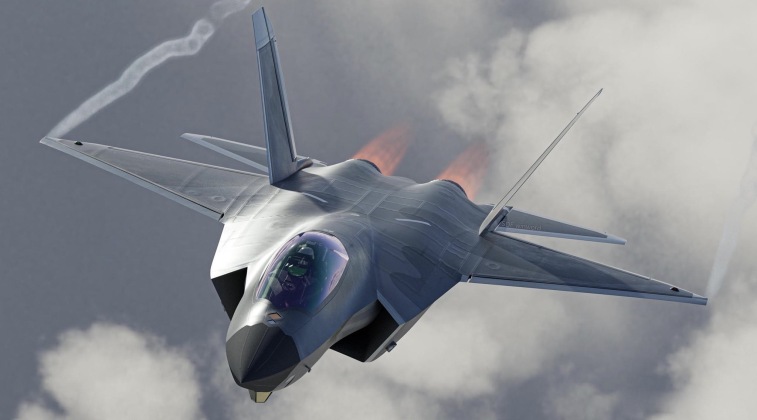News
Pakistan Announces Acquisition of First Fifth Generation Fighters: What Chinese FC-31 Stealth Jets Will Do For Its Fleet

The head of the Pakistan Air Force Air Chief Marshal Zaheer Sidhu has announced that the country is preparing to place an order for Chinese FC-31 fifth generation fighters – a class otherwise known as the J-31. The service subsequently announced: “The foundation for acquiring the J-31 stealth fighter aircraft has already been laid, which is all set to become part of the fleet in the near future.” The announcement comes 22 months after the country received its first J-10C fighters from China, which are currently considered to be by far the most capable in its fleet, and a year after the lighter JF-17 Block III, which has similarly advanced avionics and weaponry, also entered service. While both of these are relatively light single engine ‘4+ generation’ fighters, which benefitted from fifth generation level avionics and weaponry, the FC-31 will further revolutionise the capabilities of the Pakistani fleet as a much longer range aircraft with among the world’s leading stealth capabilities. Pakistan currently fields only lightweight fighters, with the J-10C and older F-16s being among the larger of these while the Mirage III, Mirage 5, J-7 and JF-17 which form the backbone of the fleet are among the very lightest in the world with takeoff weights with standard combat loading at around 8000-9000kg. The FC-31 is close to three times as heavy with a takeoff weight with standard combat load estimated at close to 24,000kg.
The Chinese People’s Liberation Army Air Force received its first fifth generation fighters in 2016 with the delivery of an initial production batch of J-20 heavyweight fighters, with these becoming operational in March the following year. The service is currently receiving stealth fighters at over twice the rate of any other air force or navy in the world at over 100 aircraft per year – where the U.S. Air Force is expected to receive 48 F-35s in 2024 after falling short of this target in 2023. As the J-20’s capabilities have improved rapidly since the class entered service, many of its technologies are expected to significantly benefit the capabilities of FC-31 fighter units sold abroad. Indeed, the latest FC-31 prototypes benefit from many of the design refinements also seen on newer J-20 production blocks, including changes to the shape of their spines to improve stealth capabilities. Among the fighter’s key technologies are distributed aperture systems which significantly increase situational awareness, new generations of stealth coatings, and advanced data links allowing for network centric operations at the very cutting edge. While the J-20 and F-35 were formerly considered in a league of their own due to their many unique capabilities at the leading edge of the fifth generation, the FC-31 is expected to field similarly advanced avionics and stealth capabilities and enter service both domestically in the Navy and in the air forces of overseas defence clients such as Pakistan.

Although relatively little is known regarding its capabilities, the FC-31 is potentially overall the most capable fighter currently on offer for export anywhere in the world, with the larger J-20’s reservation for domestic use alone leaving only the problematic and much less manoeuvrable F-35 and the much less stealthy Russian Su-57 as close contenders. While the J-10C followed by the JF-17 Block III effectively revolutionised Pakistan’s aerial warfare capabilities, the FC-31 is expected to do so again and provide the country’s combat aviation units with very distinct advantages over those of neighbouring states such as Iran and India – which rely on ‘4+ generation’ Su-35s and Su-30MKIs respectively as their top fighters. Following Japan, South Korea, Singapore and Israel which have ordered F-35s, and China and Russia which developed fifth generation fighters domestically, the acquisition will make Pakistan the seventh country outside the Western world to field a fifth generation fighter and the likely the first Muslim-majority country to do so. There have also been multiple indications that Algeria will receive Russian Su-57 fighters later in the decade.

Acquiring the FC-31 is expected to force the Pakistan Air Force to either reduce the number of fighter squadrons in its fleet or else significantly increase its budget for fighter operations, with the new stealth jet’s operational costs and maintenance needs expected to be in an entirely different league compared to all the fighter classes the country currently fields. While the number set to be fielded remains uncertain, even a single FC-31 squadron would be a game changer for the country’s combat aviation capabilities. The aircraft could serve as force multipliers for the wider fleet and leverage their advanced sensors and stealth capabilities to facilitate introduction of a range of new tactics. The acquisition of FC-31s comes as neighbouring India, with which Pakistan maintains significant territorial disputes, reportedly continues to consider acquiring Russian Su-57 fighters either as ‘off the shelf’ purchases or under a license production deal similar to that arranged for its fourth generation predecessor the Su-30. It also follows India’s acquisition of five units of S-400 air defence systems which are capable of targeting Pakistan’s current non-stealth aircraft at very long ranges. If confirmed, an acquisition will be transformative for the Pakistani fleet’s overall capabilities and its international standing, and will likely fuel further foreign interest in the FC-31 riding on the prestige which new programs such as the J-20 have gained China’s combat aviation sector.












